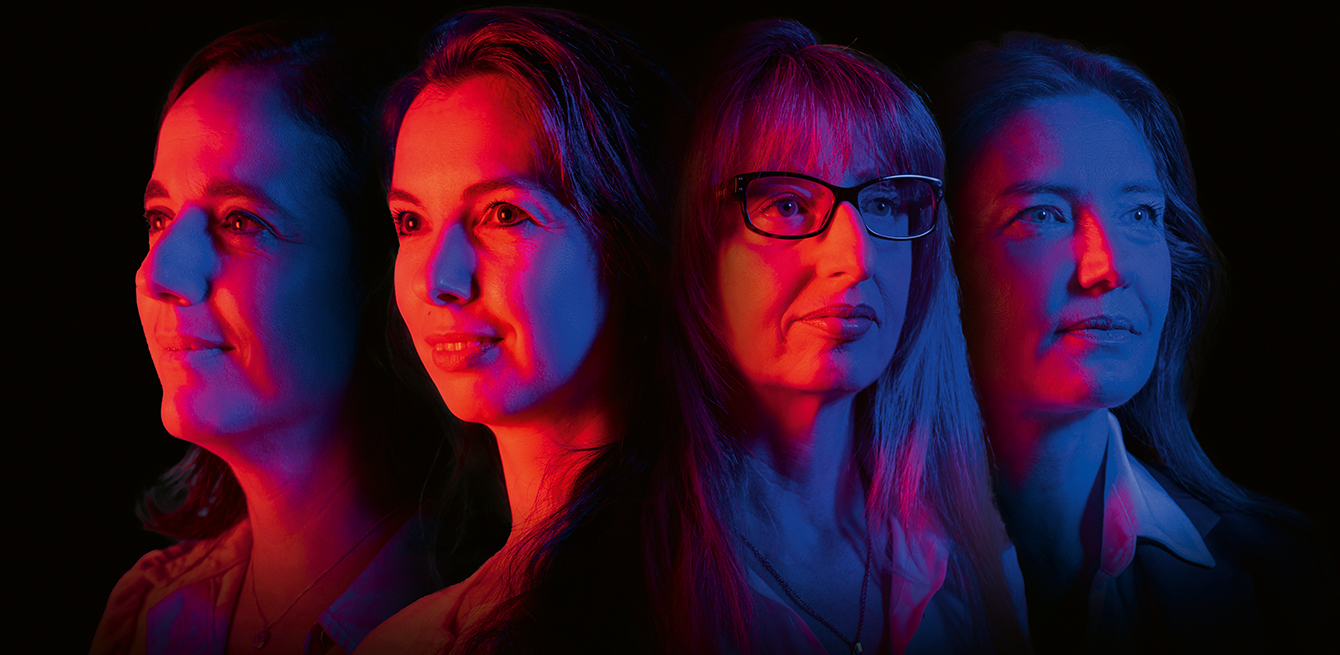
Women are still a minority in the hospital hierarchy and medical research due to social barriers that need to be lifted. This issue’s focus report presents the problem, outlines solutions and gives a voice to women researchers who have managed to shatter the glass ceiling.
Discover our 12 portraits.
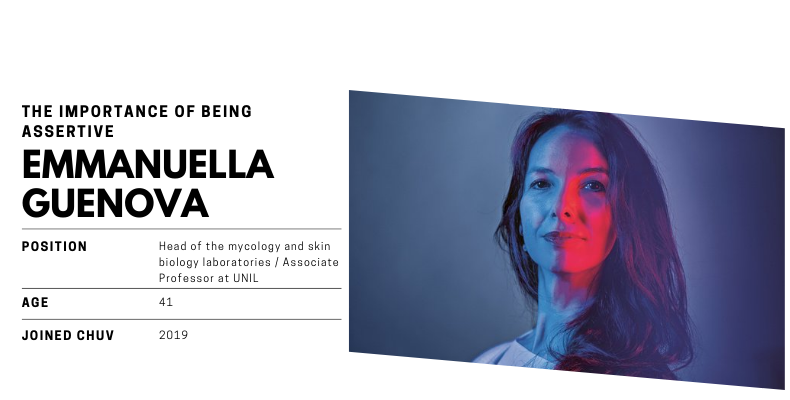
EMMANUELLA GUENOVA
“My research focus is on cutaneous immunology, more specifically on how the skin’s immune system responds to external aggressions such as cancer. Being able to spend half of my days in research and the other half at the clinic is very exciting. Of course, having many responsibilities means I don’t have as much time available for research, but in the end, you always find the time. I have always been interested in the natural sciences, especially because of their precise nature. I was also motivated by the example of my father and mother, who were a surgeon and internist-allergist respectively. I don't feel that being a woman or being a foreigner (Bulgarian and German) have made my career path more difficult. Perhaps it motivated me even more. However, I have noticed that women are often more willing to compromise, and that it’s actually the more assertive person who wins, rather than the one with the best skills.”

NELLY PITTELOUD
“Combining research and clinical work keeps us at the cutting edge of medicine while providing patients with the most advanced treatments. Being a woman means that I can be more sensitive to certain disorders. I’m currently working on a project studying infertility in Pakistan, which aims to reduce cultural and gender biases and encourages women to see doctors. When I finished medical school, the dean explained to me that research was incompatible with a family life. So I worked for about 10 years in a clinic, before having the opportunity to go to the United States to train as a researcher. This was a unique experience, during which I discovered a mostly merit-based work culture. Another striking fact is that more than a third of the professors at Massachusetts General Hospital were women, compared to only a few of us when I arrived at the CHUV. Fortunately, things seem to be changing here.”
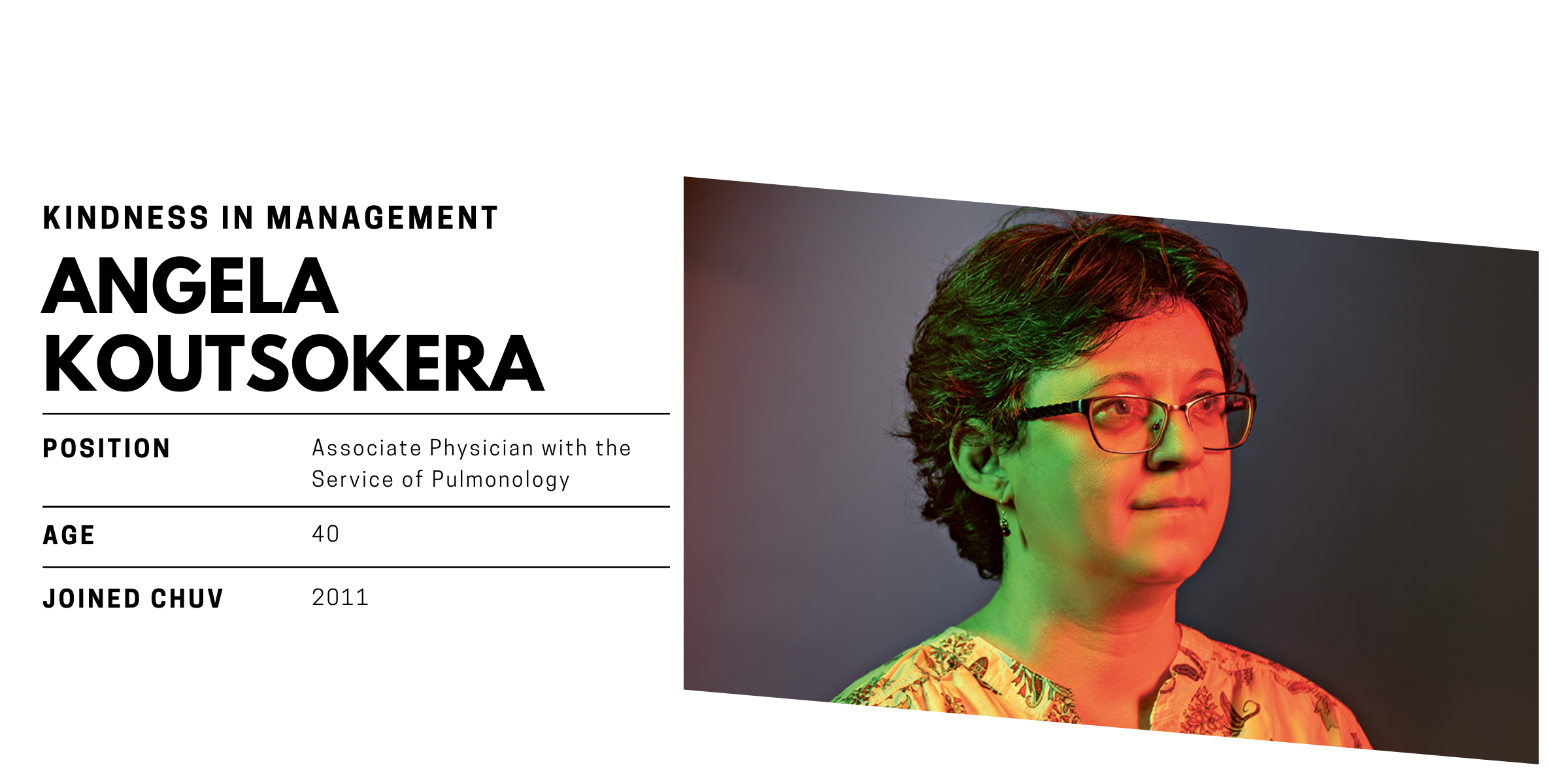
ANGELA KOUTSOKERA
“The medical complexity of transplant patients and people with cystic fibrosis drew me to pulmonology, because these people in this field need to have excellent listening skills and a multidisciplinary approach. Interaction between patients and colleagues from other specialisations drives my daily clinical work and inspires my research projects. Skills, especially leadership skills, should take precedence over gender when it comes to reaching a senior position. Mindsets are changing, and modern, kind forms of management are now being adopted. They should allow equal access to career development opportunities. Mine was fraught with many challenges, similar to those faced by my male colleagues.”
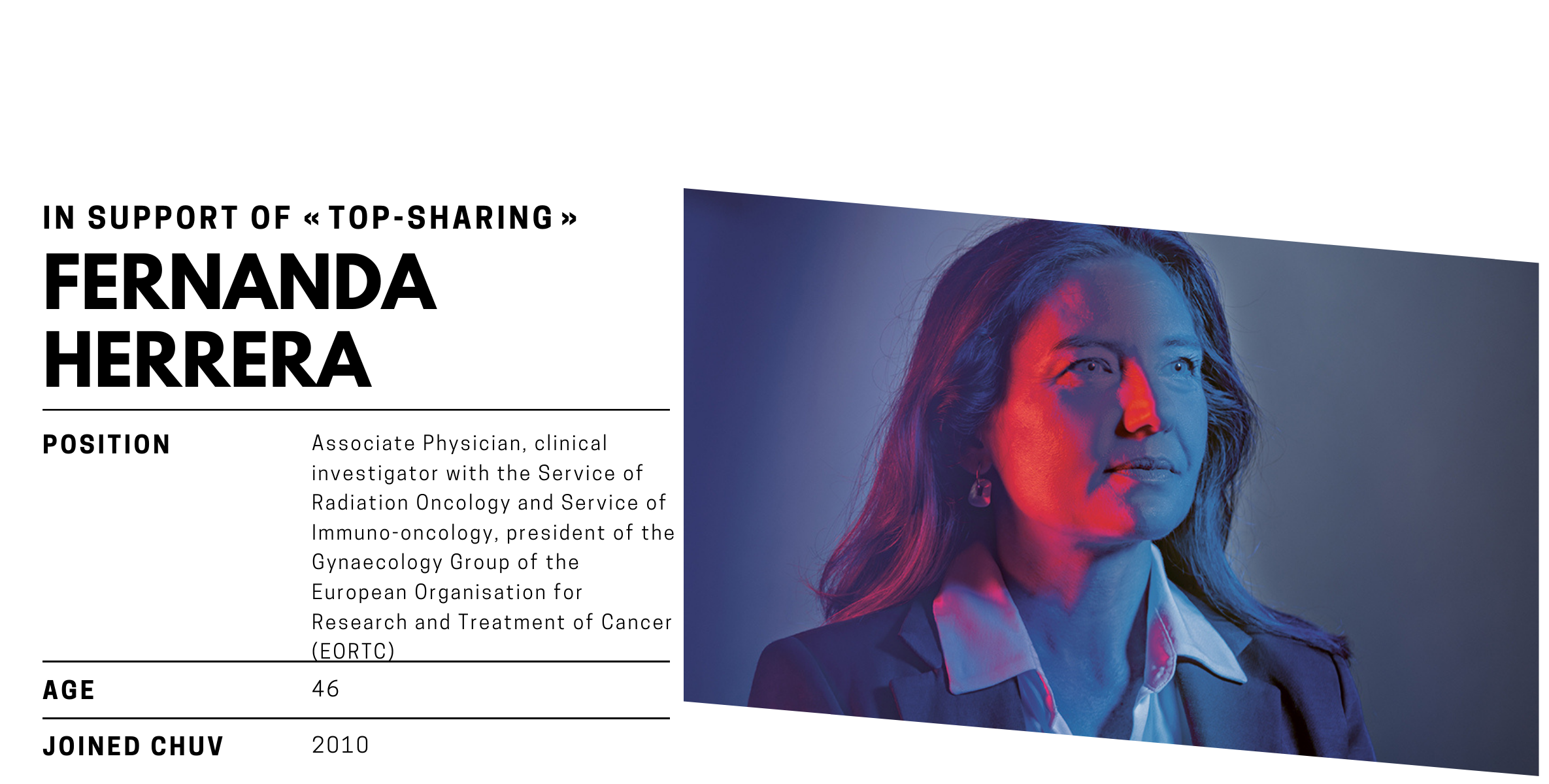
FERNANDA HERRERA
“Medicine is a demanding field, but one that is in line with my vocation and my need to help others. I was inspired by a doctor who was a friend of my family and I admired the empathy he showed towards his patients. I specialised in oncology, drawn by the dedication of the medical profession in caring for a very elderly relative of mine with advanced cancer. My research focuses on evaluating patient response to cancer immunotherapy. I’m studying how this promising technology can be combined with more proven treatments such as radiation therapy. I’m a persistent and optimistic person. I have always thought that if others have done it, I can do it too. But positions of responsibility require extraordinary dedication. This can be an obstacle for women who don’t want to set aside their personal life. That’s why it’s important to develop initiatives such as top sharing, when a top position is shared by more than one person.”
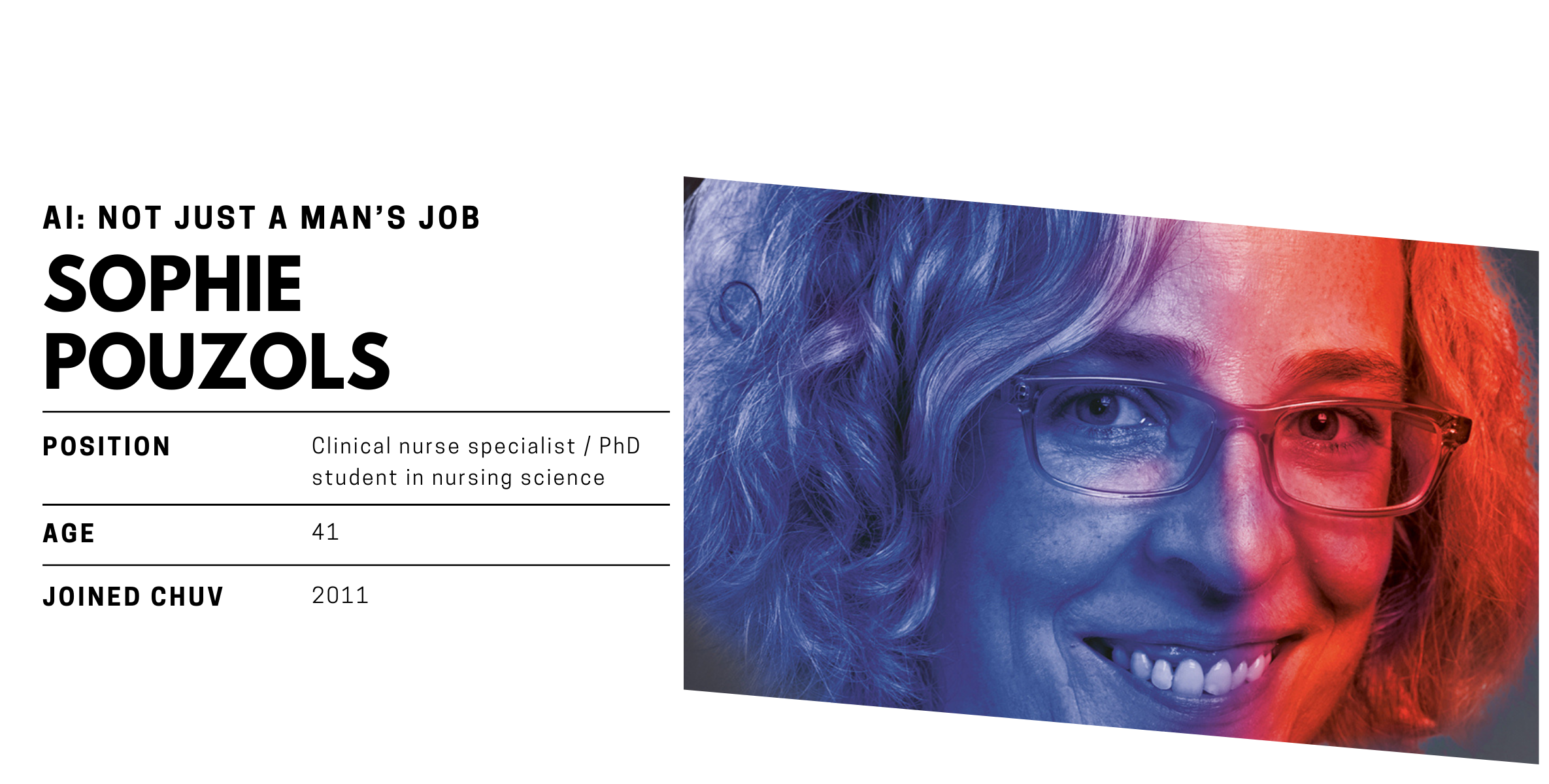
SOPHIE POUZOLS
“I arrived at the CHUV about 10 years ago, when the Unit of Palliative Medicine was opened. I had the opportunity to take several continuing education courses which led me to study performance improvement in nursing services. This past year, I divided my time between research and my work as a clinical nurse. I have not noticed any particular obstacles in my career advancement, but that is also the result of my personal life: I have no children and benefit from the unfailing support of my husband. I am now getting ready to start a PhD. My purpose is to develop a computerised decision-making tool for the early detection of confusional states in elderly patients. This project will use machine learning and artificial intelligence, a field still very much dominated by men. I intend to bring all my practical experience from the clinic to develop a tool that will be truly useful on an everyday basis.”
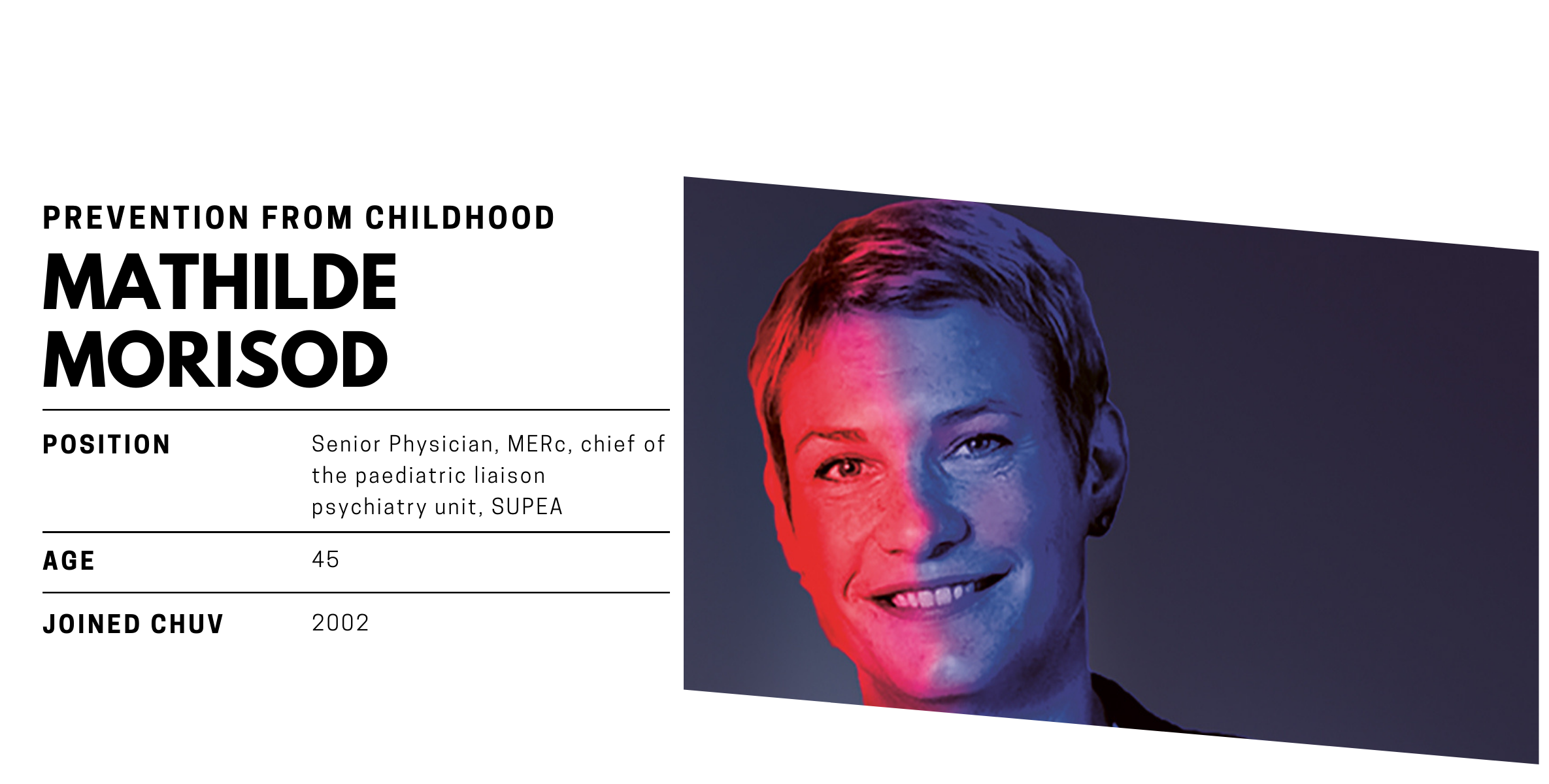
MATHILDE MORISOD
“My interest in child and adolescent psychiatry began during my first year of study. What appealed to me was the preventive potential and the possibility that psychiatric treatment could be even more effective if carried out early in the child’s life. I mainly consider research in connection with clinical work. In 2009, I was awarded the prize to promote women in academia by the Department of Psychiatry, Faculty of Biology and Medicine of the University of Lausanne, which allowed me to develop my research. My work focuses on the perinatal period and early stress. One of my team’s current projects is to understand the impact of stress caused by a hospitalisation during pregnancy on the mental state of the mother and her partner, and the possible consequences on the child. We will use our findings to develop early therapeutic interventions.”
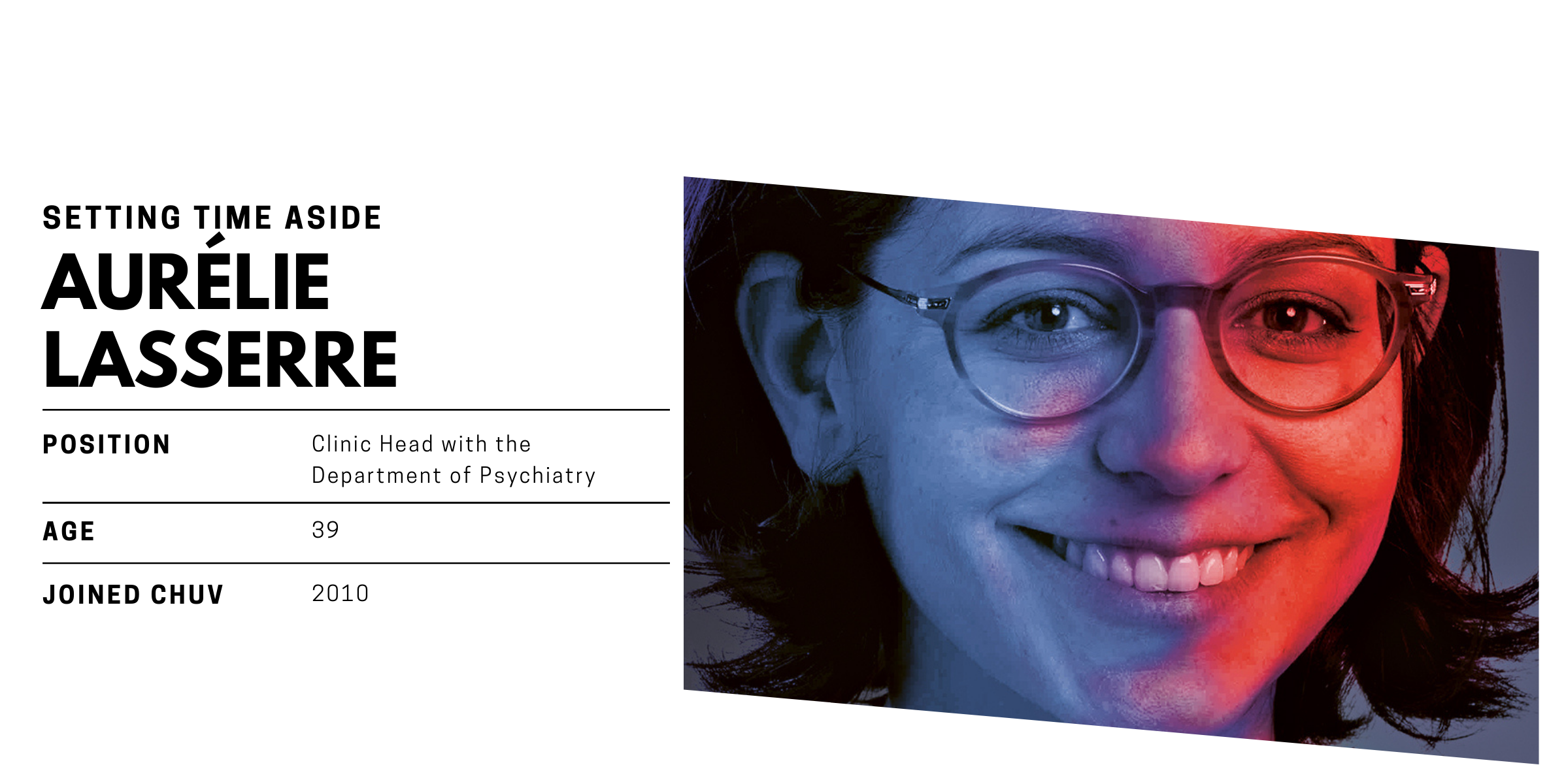
AURÉLIE LASSERRE
“When I chose my career path, I followed my interest in the natural sciences in a broad sense. I also knew that I wanted to work with people. So I chose to go into medicine. I have always gone back and forth between clinical work and research. Currently, I’m doing a postdoctoral fellowship at the Centre for Addiction and Mental Health in Toronto, Canada. My project, funded by the Swiss National Science Foundation (SNSF), focuses on the social determinants of alcohol abuse and depression. From my point of view, the main difference is that as a woman you have to be more assertive about your intention to pursue a career in academia and to be involved in institutional affairs. But that’s more self-evident for men. When I return to Switzerland, my challenge will be to obtain funding that will allow me to set aside time for research, alongside my clinical practice.”

LUCIA MAZZOLAI
“My passion for innovation and human beings drove me to study medicine. I specialised in angiology, i.e. all about blood vessels. I studied in Perugia, Italy, before moving to Switzerland. What inspires me is going back and forth between clinical work and research. Questions arise from my clinical experience. Research enables me to formulate answers that I then verify with my patients. The one therefore does not go without the other. Being a woman did not cause any difficulty as a student. However, looking back, I realised that I was able to get to my current position thanks to the support of men who trusted in my work. Today, only 15% of chief residents are women. We must urgently reduce that gap.”
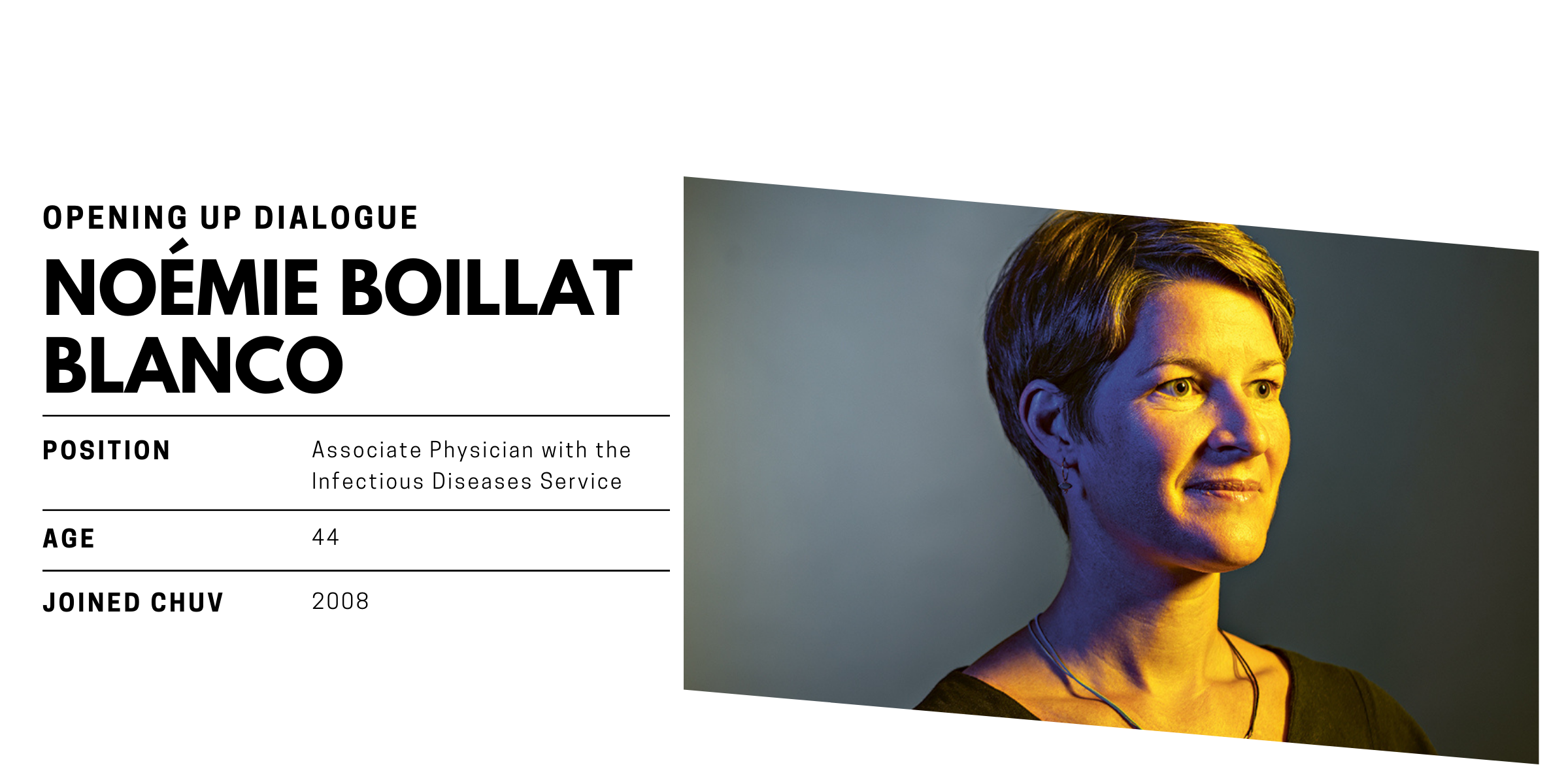
NOÉMIE BOILLAT BLANCO
“I chose to work in infectious diseases because I like the community approach to medicine, where prevention and treatment are combined with public health issues. Reconciling clinical work and research is essential to attain academic positions. Unfortunately, it is often heavy-going to combine it with family logistics, which partly explains why these positions are exclusively held by men. Working in man’s world, without a female personality to identify with and be inspired by, is sometimes difficult. But now, behaviours are changing, and the young generations of male doctors are trying, like us, to combine work and private life. We can finally talk about these issues and open up dialogue, without being paternalistic or ambiguous.”
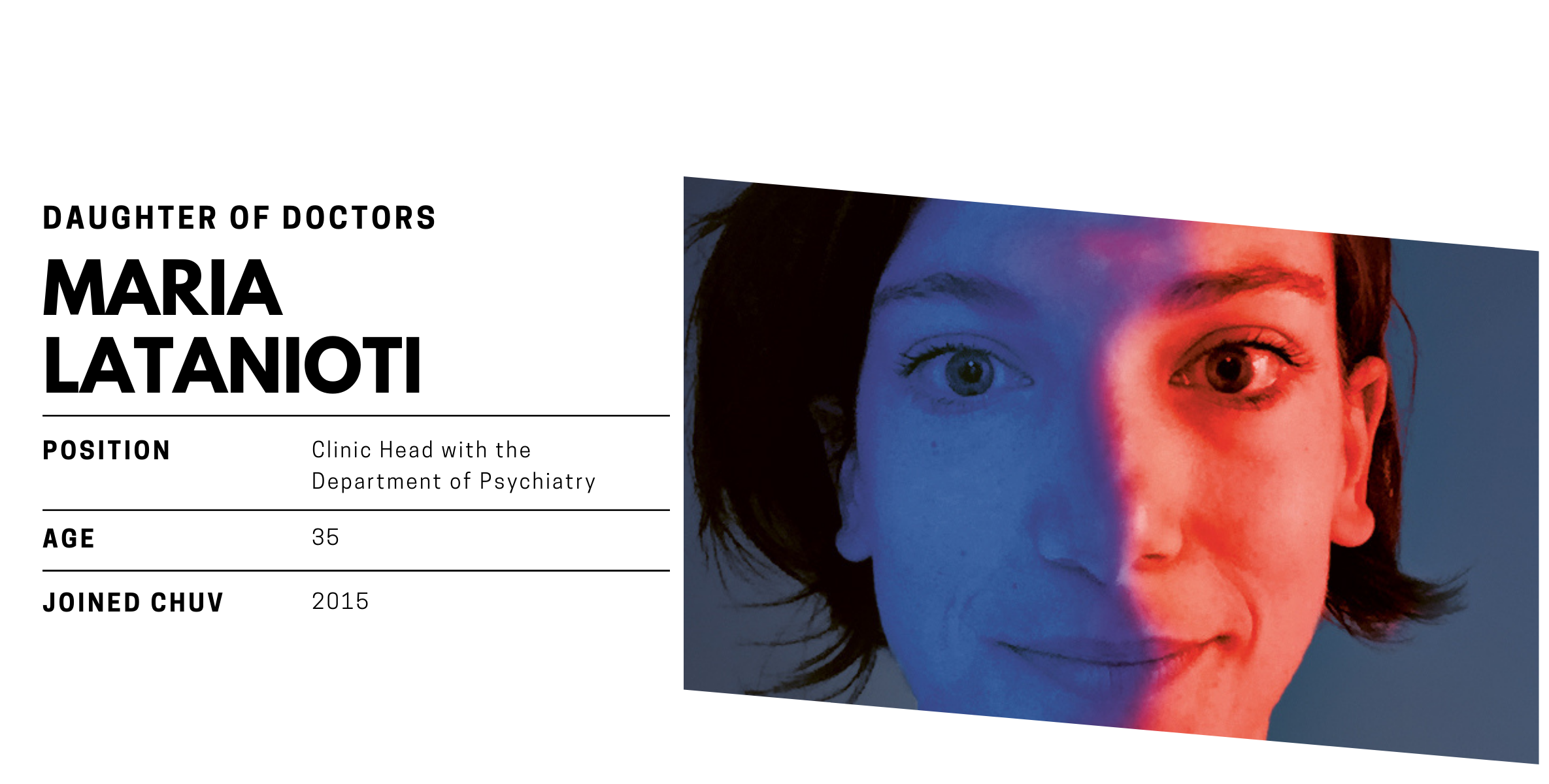
MARIA LATANIOTI
“The research I’m conducting on addiction in the over-55 age group arose from an actual clinical need. The area remains relatively unexplored, even in other countries. So I needed to conduct research to understand how to care for patients. I’m fortunate enough to work in a department where I am extremely well supported by my management. They helped me to land grants and benefit from additional training. As the daughter of doctors, I grew up listening to discussions about medicine. But it was only as a student that I discovered a particular interest in psychiatry and geriatrics. These areas are actually a perfect match for my analytical mind.”

CAROLINE ARBER BARTH
“I spend 80% of my time working in research and 20% in the clinic. My work is currently focused on immunotherapy for cancers of the blood. In research, we’re developing new approaches to cell therapy based on T lymphocytes, white blood cells responsible for cellular immunity, to make them fight the disease. In the clinic, I’m responsible for outpatient consultation relating to this type of therapy. I first wanted to devote myself to research as a student, when I was faced with important questions that had not yet been resolved. This research aligns with what led me to this career: I wanted to go into medicine to develop new therapies.”
CÉLINE DESLARZES
“Just a few years ago, women surgeons were uncommon. These days, more and more women are going into the profession. I knew at a young age that I wanted to become a surgeon. I was drawn by the technical aspects of this specialisation. My interest in vascular surgery drove me to do research in parallel to my clinical work. One of the research areas that I focus on at the same time as angiology concerns secondary cardiovascular prevention for patients with arterial disease. The goal is to develop an algorithm to identify these patients using medical records and machine learning, and therefore predict the onset of cardiovascular complications. Such tools will be used to provide personalised preventive care for all patients with arterial disease.”